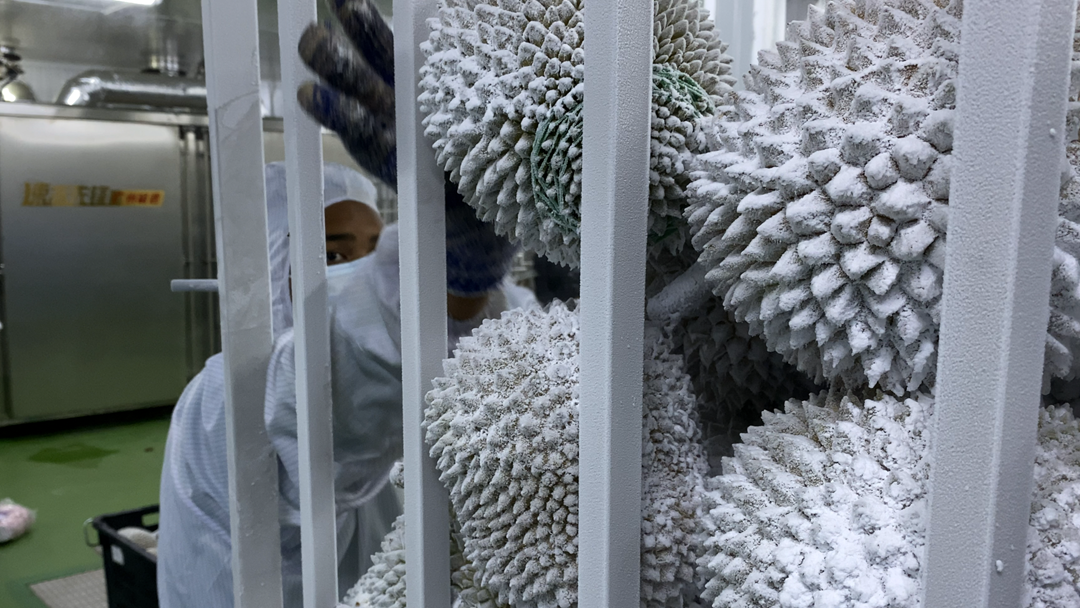
Workers use tweezers to pluck tiny fragments of feathers from the gelatinous pulp of the swiftlet nests. It's a painstaking, labor-intensive process from the time they are carefully pried from ceilings and beams in birdhouses through to the cleaning, processing and packaging. And that's just for the raw bird's nests.
Many Malaysian companies produce an array of items from bird's nests, including drinks, beauty products and soaps. Touted for their supposed health benefits, they are all particularly prized by ethnic Chinese around the world.
Malaysia exports some 600 tonnes of bird's nest a year, with about 60 percent going to China. Last year, sales to China grew by more than a third.
Moh Kee Enterprise, based in a small coastal town in central Malaysia, will again be marketing its bird's nest products at this year's China International Import Expo (CIIE).
"We have participated every time since the first CIIE. This year is the fourth year," explains Moh Kee Managing Director Tan Wooi Chong. "Because CIIE pools all foreign brands together in China, it is a very big platform. It allows us to build a diverse client group. Starting from the first CIIE, we have met many clients who agree to buy our products after seeing us continue to participate in CIIE every year."

Around 60 percent of Malaysia's bird nest production goes to China. Rian Maelzer/CGTN
Around 60 percent of Malaysia's bird nest production goes to China. Rian Maelzer/CGTN
Moh Kee will be one of several companies with booths at a pavilion set up by the Associated Chinese Chambers of Commerce and Industry of Malaysia (ACCCIM), the major grouping for Malaysian ethnic-Chinese-owned businesses, especially SMEs.
The ACCCIM has also been a keen participant in CIIE since the first year.
"CIIE is one of the ACCCIM's major international events," Ng Yok Gee, the association's chairman of international trade, said. "For the first CIIE, ACCCIM led an exhibition team of 30 booths with the ACCCIM pavilion, and then at the second CIIE, the number of booths has been increased to 42. That shows the confidence of our Malaysian exhibitor in this CIIE. It was very successful, according to the Malaysian exhibitors."
Until now, most of the companies at the ACCCIM pavilions have been from the food and beverage or agriculture sectors, including Malaysian specialties like the pungent durian and products made from it and more conventional items like biscuits. This year will see the participation of companies from the healthcare, medical supplies and consumer goods sectors as well.

Agricultural products, including durian, have been showcased at CIIE. Pahang, Malaysia. Rian Maelzer/CGTN
Agricultural products, including durian, have been showcased at CIIE. Pahang, Malaysia. Rian Maelzer/CGTN
The government trade promotion agency, MATRADE, has also lined up exhibitors from the biotechnology, electrical and electronics, and consumer goods industries.
Due to the pandemic-induced travel restrictions, participation from Malaysia has dropped in the past two years, with companies appointing agents in China to represent them.
But the hope is that by next year's CIIE, Malaysian company representatives will be back in person, and in full force.
"Our exhibitors benefit a lot," Ng said. "When the borders are open, I think we can even get more exhibitors to participate in the CIIE."
"We always want to participate in person, but COVID got in our way," said Tan of Moh Kee Birdnest. "We are keen to take part next year. No doubt we have high expectations for CIIE, which allows us to sell our products to wider and farther regions across China."

